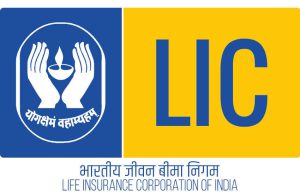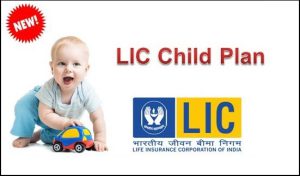Life Insurance Corporation (LIC) Child Plans
Life Insurance Corporation (LIC) Child Plans are child insurance policies offered by one of the oldest and most trusted insurance companies in the country’s insurance sector – the Life Corporation of India (LIC of India). LIC of India came into existence on September 1st, 1956, through the Life Insurance Corporation Act passed by the Indian Parliament. In January 2002, the Indian Government relaxed the insurance industry regulations and allowed private insurers to enter the insurance marketplace.

At present, the insurance company has a vast customer base of over 250 million lives. It strives to maintain the same service and the pricing of the products in the ever-competitive insurance sector.
Life Insurance Corporation offers a huge range of insurance products, including child plans, protection plans in the form of term plans, savings, and investment plans available in both ULIP or conventional form and pension plans.
The child insurance plans offered by Life Insurance Corporation are specifically designed to ensure a financially secure future for the child and help them achieve the major milestones of life. Moreover, along with the benefit of financial security, the LIC Child Insurance Plans also offer life protection to the child in case of any eventuality. Further here, we have discussed various child insurance plans offered by LIC and their features and benefits.
Best Child Insurance Plans Offered by LIC
Let’s take a look at the child insurance plans offered by Life Insurance Corporation:
LIC New Children’s Money Back Plan

This plan is a participating, non-linked, traditional, money-back plan. This policy is a tailor-made scheme that caters to marriage, education, and other needs of growing kids via Survival Benefits. Moreover, it offers a rick-cover on a child’s life during the policy term and for the survival benefits on the survival to the end of the stipulated duration.
a. Benefits of LIC’s New Children’s Money-Back Plan:
Let’s take a look at the benefits offered by LIC New Children Money-Back Plan.
1. Death Benefits
In the event of the unfortunate demise of the life assured during the tenure of the policy, the death benefit is payable as:
-
- On the demise of the Life Assured before the commencement date of risk: Return of premium (s) exclusive of extra premium, rider premium, and taxes, if any, is paid to the policy’s beneficiary.
- On the Life Assured’s demise after the commencement date of risk: Sum Assured on Death and the vested Final Additional Bonus and Simple Reversionary Bonus (if any) shall be payable.
2. Survival Benefits
In case the life assured survives the policy’s term coinciding with or right away following the accomplishment of ages 22, 20, and 18 years, 20 % of the Basic Sum Assured on every occasion shall be paid if the policy is active.
3. Maturity Benefits
If the life assured is surviving the specified maturity date if the policy is active, the SA on maturity (that is 40 % of the Basic SA) together with vested Final Additional Bonus and Simple Reversionary Bonus, if any, shall be paid.
b. Key Features of LIC’s New Children’s Money-Back Plan:
LIC’s New Children’s Money-back policy comes loaded with distinctive salient features. They are:
-
-
-
-
- LIC’s Premium Waiver Rider is available under the Life Insurance Corporation child plan, which promises a waiver of future premiums in case of the death of the proposer.
- It is a participating plan, which is eligible to earn bonuses, and the premium is paid for a limited term of the plan.
- For children aged less than 8 years, there is a deferment period under this LIC New Children Money Back Plan. The risk cover will begin one day before the completion of 2 years of the policy commencement or one day before the policy anniversary, which coincides with or follows the completion of 8 years of age.
- The Life Insurance Corporation child plan policy will vest in the name of the child who is the life assured and will then become the policyholder on the policy anniversary following the completion of 18 years of age.
- The loan can be availed under this LIC child plan.
- Under this LIC child plan, the rebate is given in premium rates if the policyholder pays yearly or half-yearly premiums @ 2% and 1%, respectively.
- Rebates are allowed in premium for choosing a high Sum Assured level of Rs.2 lakh and above under this LIC child education plan.
- The tax benefit is available under the Life Insurance Corporation New Children Money-Back plan on the premium paid and the claim received. The premiums paid are exempt from taxation under Section 80C of the Income Tax Act and the claim received is exempt under Section 10(10D) of the Income Tax Act.
-
-
-
c. Eligibility Details
|
Minimum |
Maximum |
|
|
Entry Age |
0 years |
12 years |
|
Maturity Age |
– |
25 years |
|
Policy Term |
25 years – the entry age of the child |
|
|
Sum Assured |
Rs.1 lakh |
No limit |
|
Annual Premium Amount |
Rs.24, 000 |
No limit |
|
Premium Payment Term |
10 years, 7 years or (term – 5) years |
|
|
Premium Payment Frequency |
Yearly, half-yearly, quarterly, monthly |
|
d. Sample Rates of Premium
The following table shows the sample rates of premiums payable by individuals under the Life Insurance Corporation child plan at different ages and at different levels of Sum Assured.
|
Age |
Sum Assured = Rs.1 lakh |
Sum Assured = Rs.5 lakhs |
|
0 years |
Rs.4415 |
Rs.22, 075 |
|
5 years |
Rs.5700 |
Rs.28, 500 |
|
10 years |
Rs.8060 |
Rs.40, 300 |
|
12 years |
Rs.9390 |
Rs.46, 950 |
LIC Jeevan Tarun

Life Insurance Corporation Jeevan Tarun is a non-linked participating limited premium payment plan, which offers the combined benefit of savings and life protection features for children. The plan is specifically designed to cater to the educational and other financial needs of the growing children. The following are the features and benefits offered by the policy.
a. Benefits of LIC Jeevan Tarun Plan:
Let’s take a look at the benefits offered by LIC Jeevan Tarun.
1. Death Benefit
In the event of the demise of the life assured, the death benefit is offered to the beneficiary of the policy (the child ) as:
i. On death before commencement of risk
The entire amount of premium paid to date, excluding taxes, extra premium, and rider premium, if any, is payable to the policy’s beneficiary without interest.
ii. On death after commencement of risk.
The death benefit is offered as the total sum assured amount on death plus vested reversionary bonus and the final additional bonus if any is paid to the policy’s beneficiary.
The sum assured on death is defined as a higher of 125% of the total sum assured amount or 7 times the annualized premium. The death benefit offered to the beneficiary should be 105% of the total premium paid to date.
2. Survival Benefits
A fixed percentage of the sum assured is paid on each policy anniversary to the child after he/she completes 20 years of age. The survival benefit continues to be paid for the next four policy anniversaries. The fixed percentage of the sum assured depends on the option chosen by the life assured when purchasing the policy. Let’s take a look at the various options and percentages.
|
Completion of ages of the child/ coinciding policy anniversary 20-24 years
|
Sum Assured % to be Paid as Survival Benefit |
|||
|
Option 1 |
Option 2 |
Option 3 |
Option 4 |
|
| 20-24 years |
Nil |
5% each year |
10% each year |
15% each year |
3. Maturity Benefits
In case of survival of the life assured during the tenure of the policy, the sum assured on maturity along with final additional bonus and vested reversionary bonus, if any is paid to the insured. Let’s take a fixed percentage of the sum assured amount in maturity for various options.
|
Maturity Age |
Option 1 |
Option 2 |
Option 3 |
Option 4 |
|
25 years |
100% |
75% |
50% |
25% |
4. Tax Benefit
LIC Jeevan Traun’s plan provides the benefit of tax exemption to the policyholder. The premium paid towards the policy up to the maximum limit of 1.5 lakh and the maturity proceeds are tax exempted under sections 80C and 10(10D) of the Income Tax Act.
b. Features of LIC Jeevan Tarun
The following are the salient features of LIC Jeevan Tarun.
-
- It is a participating LIC child plan and, as such, is eligible to earn bonuses depending on the company’s profit experience. If any, simple reversionary bonuses and a final bonus at the end of the plan are payable under this LIC child plan.
- LIC’s Premium Waiver Rider is available under the LIC child plan, which promises a waiver of future premiums in case of the death of the proposer.
- The premium under the LIC child plan is to be paid for a limited term only.
- There are four options to avail of the survival benefits and maturity benefits under the LIC child plan as per the policyholder’s choice.
- The loan can be availed under this LIC child plan.
- Under this LIC child plan, the rebate is given in premium rates if the policyholder pays yearly or half-yearly premiums @ 2% and 1%, respectively.
- Under this LIC child plan, rebates are allowed in premium for choosing a high Sum Assured level of Rs.2 lakh and above.
c. Eligibility Details
|
|
Minimum |
Maximum |
|
Entry Age |
0 years |
12 years |
|
Maturity Age |
– |
25 years |
|
Policy Term |
25 years – the entry age of the child |
|
|
Sum Assured |
Rs.1 lakh |
No limit |
|
Annual Premium Amount |
Rs.24, 000 |
No limit |
|
Premium Payment Term |
10 years, 5 years or (term – 5) years |
|
|
Premium Payment Frequency |
Yearly, half-yearly, quarterly, monthly |
|
d. Sample Rates of Premium
The following table shows the sample rates of premiums payable by individuals under the LIC Jeevan Tarun plan at different ages and different options for a Sum Assured of Rs.50,000.
|
Age |
Option 1 |
Option 2 |
Option 3 |
Option 4 |
|
0 years |
Rs.4480 |
Rs.4580 |
Rs.4680 |
Rs.4780 |
|
4 years |
Rs.5595 |
Rs.5750 |
Rs.5900 |
Rs.6055 |
|
8 years |
Rs.7565 |
Rs.7800 |
Rs.8040 |
Rs.8275 |
|
12 years |
Rs.11, 270 |
Rs.11, 665 |
Rs.12, 060 |
Rs.12, 460 |
Benefits of LIC Child Plans

A child plan is relatively a long-term product. Such a plan can be taken as soon as one knows that one is going to become a parent or on the day the child is born. The sooner one takes child insurance, the better it is for the offspring. The benefits of child policies like the Life Insurance Corporation child education plans accrue over the long term, especially when the child needs them the most.
A child’s plan helps to secure the future of the child, whether boy or girl. This type of life insurance assists in fulfilling the needs and dreams of the child at the right time so that they can lead a life of their choice.
A LIC Child plan offers several advantages to the child and family as a whole.
The important ones are discussed below:
1. Supports Child’s School Fees
The child plan can help pay the child’s school fees. If the parent is no more, the insurance company immediately pays a certain percentage of the assured sum, like 10%. It will also begin periodic annual payouts to the tune of 10% or so of the sum assured until the end of the policy term. These payouts help to comfortably take care of the school fees in the absence of the breadwinner parent.
2. Assists Child’s Extracurricular Interests
By way of partial withdrawals also assist in nurturing a child’s talents and extracurricular interests. Singing, painting, dancing, sports, and other such talents can be developed with the help of funds from partial withdrawals from a child plan. Some plans disburse periodic amounts to meet expenses incurred on such activities.
3. Helps Fund Higher Education
The cost of education is rising consistently. Coupled with inflation, college and higher education fee can become a burden on the family. If a parent plans well and takes a child plan when the child is small, the money-back under a LIC child education plan can be planned to coincide with the child’s higher educational requirements. That way, the child will pursue a career of his/her choice even if the parent expires during the interim period. Such an unfortunate circumstance does not terminate the plan. The insurance company pays the remaining future premiums. It allows the plan to continue such that money back is paid as promised. The child can comfortably pursue professional courses like engineering, medicine, law, chartered accountancy, architecture, commerce, arts, etc. He or she may even go abroad for further studies. One does not have to resort to loans to pay for the cost of higher education.
4. Helps Finance Child’s wedding
Child plans are a great way for the parent to fulfill their responsibility for their child’s wedding. One may plan so that a lump sum amount is available when the child becomes of marriageable age. That way, the parents’ dream of a perfect wedding comes true without them having to worry about the finances.
5. Avoids Capital Erosion
Market volatility may lead to capital erosion. Dynamic Fund Allocation and Systematic Transfer Plan (STP) offered under child plans help make the best of the invested amount during different life stages.
-
- Dynamic Fund Allocation balances equity and debt exposure in the portfolio by the automatic allocation of the fund value as per predetermined percentages – higher allocation to equities in the initial policy years for generating potentially higher returns, and later, higher allocation to debt as the policy nears maturity to protect the maturity value.
- A systematic Transfer Plan or Systematic Fund Transfer automatically switches a pre-defined amount to another fund to best market volatility.
Some of the Key Features Offered by LIC Child Plans

LIC Child plans come loaded with a wide range of salient features catering to the needs of parents in the country. The key features of these plans are as follows:
- Waiver of Premium – This is the in-built and the most important feature of every LIC Child Plan. It makes sure that the policyholder – the child – qualifies for the pre-decided sum assured together with the accumulated interest in the event of the sudden demise of the policyholder during the term of the policy. This is not it, the plan will continue unaffected, and the benefits as promised under the plan will accrue as and when they fall due.
- Deferment Feature – There is a concept of ‘deferment’ in some of the child plans. Deferment means postponement and is usually applied if the child is the person insured. Under the deferment clause, the risk covered under the plan starts after the expiry of a couple of years. If the child dies during the deferment period, the premiums paid until the date of death are returned because the life cover is not applicable during that period.
- Vesting – Another concept is ‘Vesting’, which means the child’s age when the policy vests in the name of the child and he becomes the policyholder. The Vesting age is usually 18 years when the child attains majority and becomes the policyholder of the plan.
Why choose Life Insurance Corporation Child Plans?
Child Insurance plans have become very important because they specifically provide for your child’s future even in your absence. The inbuilt premium waiver rider ensures that the plan continues even after the parent’s death and the benefits accrue and when they are payable so that the benefits can be utilized for the purpose for which it was initially planned, i.e. for the child’s future.
Let’s understand this with an example:
Mr. A, with a child currently aged 5 years, buys a child plan with 20 years of tenure. The child policy promises money-backs on the 15th, 17th, and 20th policy anniversary. Mr. A planned the money-back periods to coincide with the child’s educational milestones. He would receive the funds when the child reaches 20 years, 22 years, and 25 years. The funds will be utilized to take care of the higher education of his child.
If Mr. A dies, the plan will not be terminated, and future premiums and the money-backs will be paid as and when promised. Thus, the money will be utilized only for the child’s education which was the actual rationale for buying the child’s education plan.
Applying for a LIC Child Plan from the company
You can apply for LIC Child Plans in both – online and offline mode.
1. Online
The company offers specific LIC child plans, which are available online only. The customer only needs to log into the company’s website, choose the required Life Insurance Corporation child plan, choose the coverage, and provide the details. The premium will be determined using the filled details. The customer then needs to pay the premium online through credit card, debit card, or net banking facilities, and the LIC child education plan policy will be issued.
2. Intermediaries
LIC child plans, which are not available online, can be purchased from agents, brokers, banks, etc. The intermediaries help with the application process.
Also Read:
